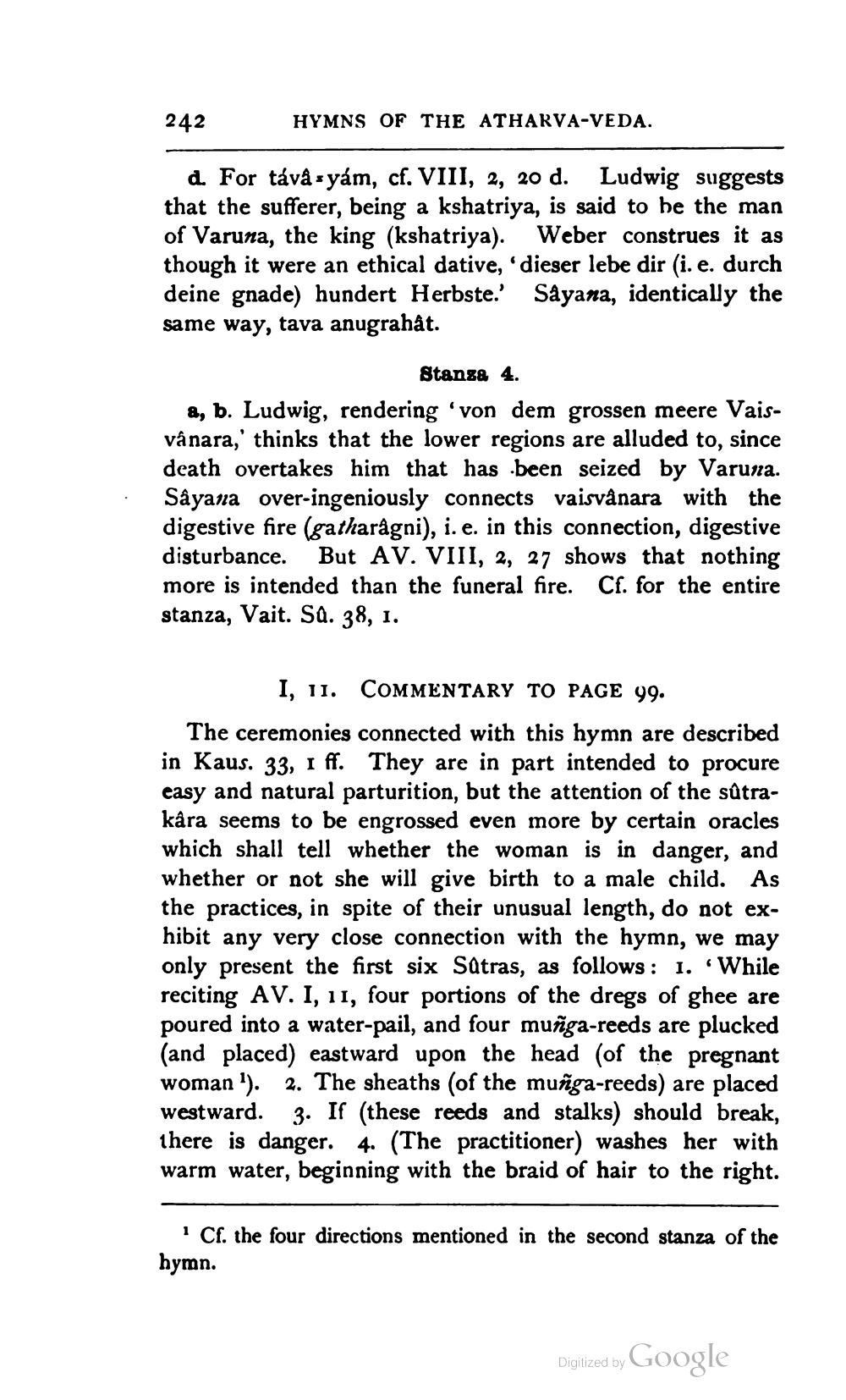________________
242
HYMNS OF THE ATHARVA-VEDA.
d. For távå syám, cf. VIII, 2, 20 d. Ludwig suggests that the sufferer, being a kshatriya, is said to be the man of Varuna, the king (kshatriya). Weber construes it as though it were an ethical dative, ‘dieser lebe dir (i. e. durch deine gnade) hundert Herbste.' Sayana, identically the same way, tava anugrahat.
Stans& 4. a, b. Ludwig, rendering 'von dem grossen meere Vaisvânara,' thinks that the lower regions are alluded to, since death overtakes him that has been seized by Varuna. Sâyana over-ingeniously connects vaisvanara with the digestive fire (gatharågni), i.e. in this connection, digestive disturbance. But AV. VIII, 2, 27 shows that nothing more is intended than the funeral fire. Cf. for the entire stanza, Vait. Sa. 38, 1.
I, 11. COMMENTARY TO PAGE 99. The ceremonies connected with this hymn are described in Kaus. 33, i ff. They are in part intended to procure easy and natural parturition, but the attention of the søtrakâra seems to be engrossed even more by certain oracles which shall tell whether the woman is in danger, and whether or not she will give birth to a male child. As the practices, in spite of their unusual length, do not exhibit any very close connection with the hymn, we may only present the first six Satras, as follows: 1. While reciting AV. I, 11, four portions of the dregs of ghee are poured into a water-pail, and four muñga-reeds are plucked (and placed) eastward upon the head (of the pregnant woman'). 2. The sheaths (of the muñga-reeds) are placed westward. 3. If (these reeds and stalks) should break, there is danger. 4. (The practitioner) washes her with warm water, beginning with the braid of hair to the right.
* Cf. the four directions mentioned in the second stanza of the hymn.
Digized by Google




